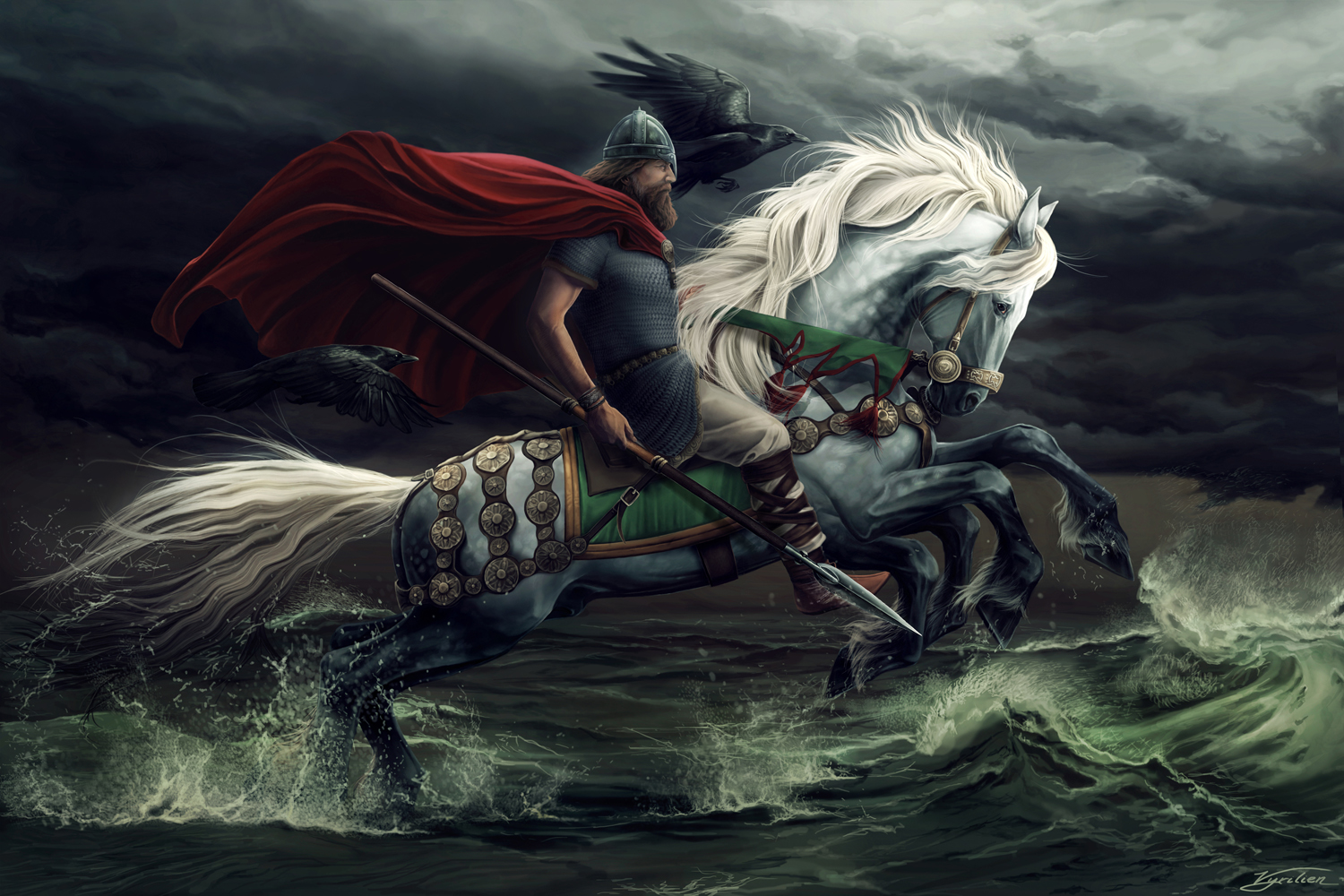
Other Symbols Related to Lokiīesides snakes, Loki is often associated with nets. There may be more Norse artistic depictions of Loki in existence, but they are of him in an alternate form. In his misadventures causing chaos and mayhem, he takes the form of an old woman, a giantess, a flea, an eagle, a mare, a seal, and a salmon, among others. Loki’s appearance receives more attention when he is shapeshifting.

There is also a myth that tells of Loki getting his mouth sewn shut by dwarves. There are very few artistic depictions of Loki from the ancient Norse, one of which is the Snaptun Stone, which features a man with his lips stitched together. This is the only written description of his appearance when he is not shapeshifting. One account, Snorri’s Prose Edda, says that Loki is beautiful in appearance but evil in spirit. He is probably good-looking when he is not shapeshifting, but that is the extent of modern knowledge of Loki’s appearance. Nobody is sure what Loki looks like, both because of his shapeshifting ability and the lack of depictions of him. Loki transforms into a mare, mates with the male horse Svadilfari, and gives birth to Sleipnir.Īlso see What Does Loki Look Like in Norse Mythology? to learn more. Sleipnir is an eight-legged horse that Odin rides into battle, and Loki is his mother. Narfi’s intestines are then used to bind Loki to the same rock where Loki is eternally tortured by snake venom. In another version, Vali becomes the wolf and kills Narfi. In one account, Narfi, sometimes called Nari, is changed into a wolf and kills Vali. Vali’s mother is unknown, but some scholars assume he is also Sigyn’s child. Narfi is the son of Loki and Sigyn, his wife. However, in Norse Mythology, she is not a goddess but is considered one by many other scholars. She is the goddess who presides over the realm of the dead, which is also called Hel.

Hel is the only daughter of Loki and Angrboda and their only humanoid child. At Ragnarok, it is prophesied that Fenrir will kill Odin before being killed by Odin’s son Vidar. Fenrir bites off one of the god Tyr’s hands, and the gods bind him as punishment until Ragnarok. Like Jormungandr, he is an animal, in this case, a giant wolf. Fenrirįenrir is the other son of Loki and Angrboda. Let’s take a look at who his children are. His children are Fenrir, Hel, Narfi, Vali, and Sleipnir. Loki has at least five other children besides Jormungandr, including two more with Angrboda. Loki has several other children, not all of them humanoid, but Jormungandr is the only snake. None of Loki’s children besides Jormungandr are serpents. What does Loki look like in Norse mythology? see below Were Loki’s Other Children Serpents? Ragnarok will begin when Jormungandr releases his tail from his mouth, and he and Thor will kill each other. Thor fights Jormungandr on multiple occasions, and they are predicted to fight at Ragnarok. According to myth, Jormungandr lives in the ocean and is large enough to encircle the earth, catching his tail in his mouth.įor this reason, he is something sometimes called the Midgard or World Serpent. He is so big that he surrounds the whole earth, and he is Thor’s archenemy. Jormungandr is Loki’s son with the giantess Angrboda, and he is a massive snake.

Loki endures extraordinary pain until Sigyn returns with an empty bowl, and the cycle continues until Ragnarok, the end times.Īlso see Are Thor and Loki Brothers in Norse Mythology? to learn more. When the bowl is full, she must pour it out, leaving Loki unprotected for a short time. The snake drips venom from its fangs onto Loki’s body, but his wife Sigyn catches the venom in a bowl.

Another myth says that the gods of Asgard punish Loki for his tricks by tying him to a rock and torturing him with snake venom. One of Loki’s children is Jormungandr ( something called Jormungand), a giant serpent. Two myths about Loki feature snakes as well. Snakes are associated with deceit, fertility, and change, all of which feature in Loki’s myths. However, it is understandable that a modern audience connects the two. There is no evidence that the ancient Norse used snakes to represent Loki. For example, there are many surviving snake-shaped brooches, but whether or not these snakes are specific to Loki remains unknown. It does appear that snakes held great religious and cultural significance to the Norse. Some students of mythology claim that Loki’s symbol is the snake, but there is no evidence of this from the ancient Norse. Why is Loki associated with snakes? See below Is Loki’s Symbol a Snake?


 0 kommentar(er)
0 kommentar(er)
